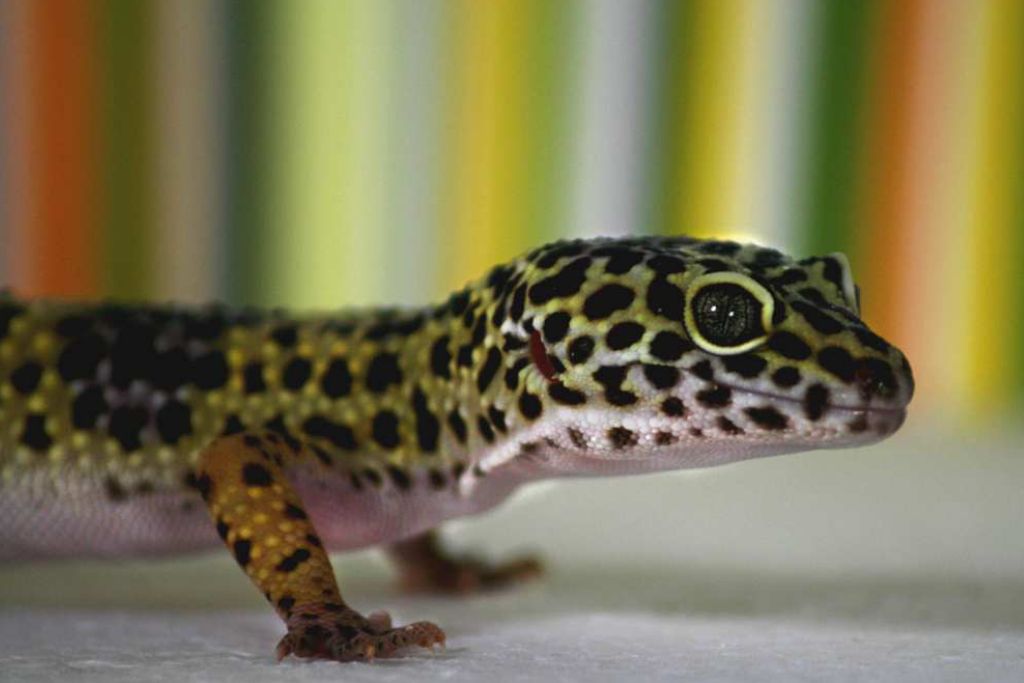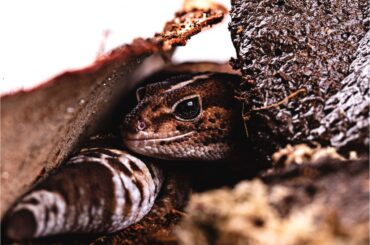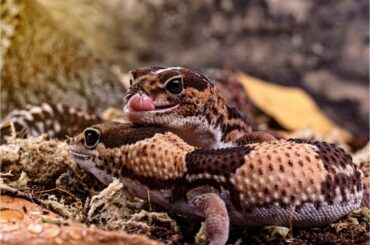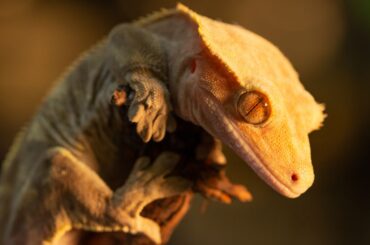Have you ever gazed at a leopard gecko and wondered, Does this captivating creature need UVB lighting? You may consider getting one as a pet, or you already have one and are keen to ensure its optimum health.
Originating from the rocky desert terrains of the Middle East, these fascinating reptiles are best known for their distinct, patterned skin and nocturnal habits. Unlike some of their reptile cousins, leopard geckos are ground dwellers, which brings unique characteristics and requirements for their care.
The need for UVB light – or lack thereof – can significantly impact a leopard gecko’s health. We’ll unpack this topic thoroughly, guiding you through the ins and outs of UVB lighting for these unique creatures.
Leopard Gecko Lifestyle
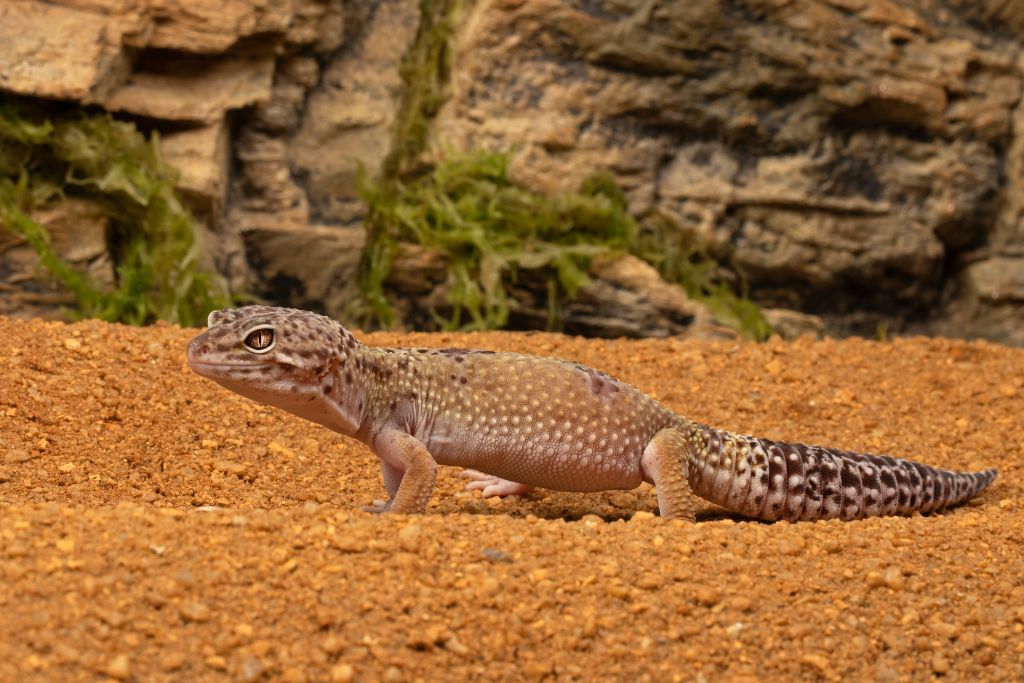
Ever wonder where leopard geckos come from? These remarkable reptiles, being nocturnal, thrive during nighttime activities. Their roots trace back to regions like Pakistan, India, Afghanistan, Iran, and nearby areas.
Their wild lifestyle presents a fascinating daily routine. To beat the intense daytime heat, leopard geckos seek refuge in burrows for a good sleep. Once the sun dips and cooler evening temperatures prevail, that’s when these geckos spring into action. Twilight and dawn are their prime times for hunting, searching for tasty treats, like insects.
These little fellas need warmth to thrive. That’s why it’s so important to keep their homes warm in captivity. Just like in their natural habitats, they need a cozy place to retreat during the day and an environment that’s warm enough for their nightly activities.
The Role of Lighting for Leopard Geckos
Let’s dive into the world of lighting for leopard geckos.
- Simulating Day and Night: Leopard geckos are used to a specific day-night cycle in their native habitats. Having a similar light-dark cycle in captivity helps them maintain their natural rhythms.
- Regulating Activity: Lighting cues play a big part in telling leopard geckos when it’s time to be active and when it’s time to rest. Correct lighting can help mimic their natural environment and schedule.
- Aiding in Digestion: Believe it or not, correct lighting, especially heat, assists leopard geckos in digesting their food. Their little bellies might need the right conditions to break down food.
UVB Lighting: Research and Benefits
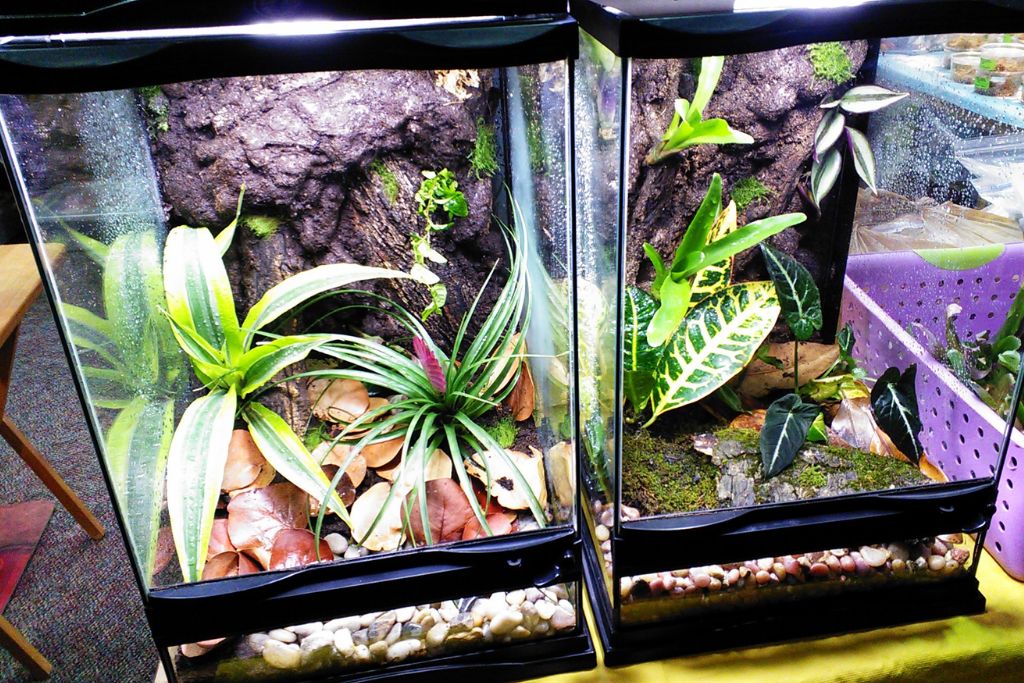
Isn’t it fascinating that light can affect our health? For leopard geckos, it’s been found that those exposed to UVB rays when they’re young have higher levels of vitamin D3. Imagine that these critters can boost their vitamin D3 just by basking in the light.
So, why is vitamin D3 of such significance? This vitamin is crucial in maintaining the health of our geckos. It enhances their immune system, equipping them to fend off illnesses, and it fortifies their bones. Our understanding of how UVB light influences leopard geckos is still evolving, and we need more research to delve deeper.
Best UVB For Leopard Geckos
Now we know why UVB lighting can be important, but what kind should you get for your leopard gecko? Let’s explore some options!
Compact Fluorescent Bulbs
Compact fluorescent bulbs are a popular choice. They’re energy-efficient, last a long time, and emit much UVB light. Just make sure not to place them too close to your gecko, as they can be intense.
Mercury Vapor Bulbs
Mercury vapor bulbs are another great option. They’re a bit pricier, but they produce both heat and UVB light. It’s like a two-for-one deal!
Linear Fluorescent Bulbs
Linear fluorescent bulbs can also work well. These are typically long, tube-like bulbs that provide a nice, even spread of UVB light.
Proper Use of UV Light in Leopard Geckos’ Enclosures
Let’s understand how to use a UVB light properly in a leopard gecko’s home.
Don’t Overdo It
While UVB light can be beneficial, too much can harm your leopard gecko. Keep a check on the exposure time. A few hours a day should be enough.
Allow Shade
Leopard geckos have plenty of places to hide from the sun in their natural habitats. Try to mimic this in their enclosure. Provide shaded areas where they can escape from the light when needed.
Monitor Closely
Always keep an eye on your pet. If you notice any changes in their behavior after introducing UVB light, consulting a vet might be a good idea.
Setting Up a UVB Lighting System
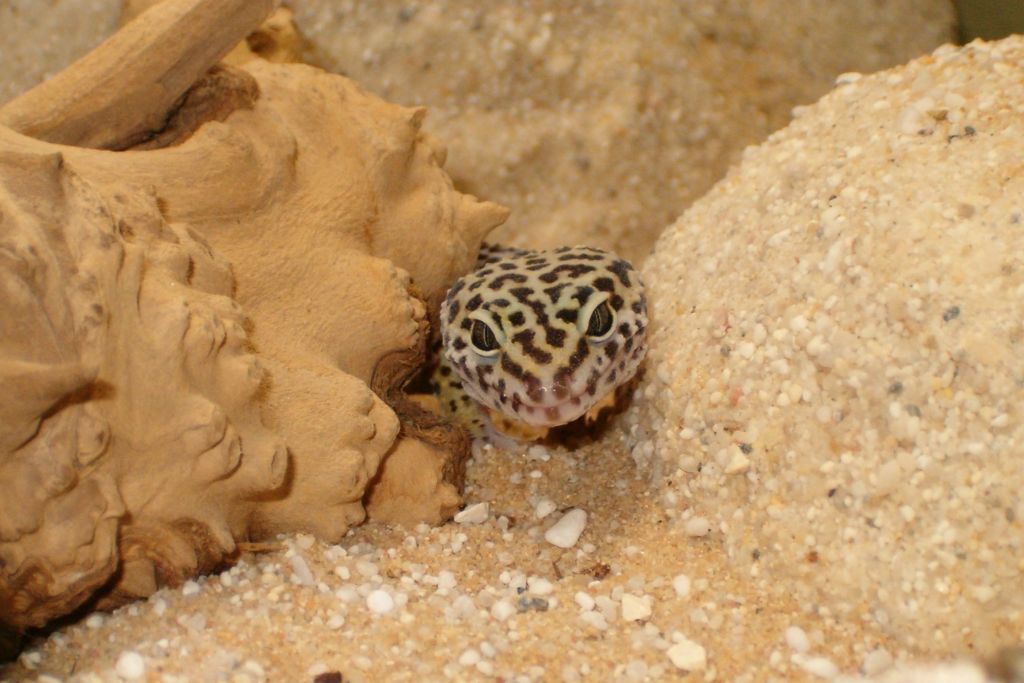
Let’s get hands-on and learn how to set up a UVB lighting system for your leopard gecko. Here are some straightforward steps to follow:
- Select the Right Bulb: Numerous types of UVB bulbs are available, as we’ve discussed earlier. Your first step involves choosing a bulb that suits both your needs and your budget.
- Procure a Suitable Lamp: Once you have your bulb, you’ll need an appropriate lamp to house it. Ensure the lamp is the correct size for your chosen bulb.
- Identify the Ideal Spot: Next, place your lamp on one side of the gecko’s enclosure. This placement creates a light and heat gradient, offering your gecko an option between a brighter, warmer side and a darker, cooler side.
- Install a Timer: UVB light isn’t necessary all day for leopard geckos. By installing a timer, you can manage the exposure to the light. You should set it to operate for a few hours each day, ideally during morning or evening hours, simulating dawn and dusk.
- Monitor and Make Adjustments: Keep a close eye on your gecko’s behavior. Notice any changes? You may need to tweak the lamp’s location, the duration of light, or even switch the type of bulb.
Conclusion
The journey of understanding leopard geckos and their unique needs is full of fascinating discoveries. As caretakers or future owners, we are responsible for ensuring these awesome creatures receive top-notch care.
But remember, merely providing for their needs isn’t enough. We must also comprehend the reasons behind these requirements. Continue expanding your knowledge, remain observant, and revel in the delightful experience of sharing your life with a leopard gecko!
FAQs
How Long to Leave Uvb Light on for Leopard Gecko?
Around 10 to 12 hours per day should be enough for your leopard gecko.
Do House Geckos Need UVB?
Yes, most gecko species, including house geckos, benefit from UVB lighting.
Do Leopard Geckos Prefer Hot or Cold?
Leopard geckos prefer a warmer environment. These reptiles don’t like extreme heat, so temperatures should not exceed the upper limit.
What Gecko Glows in the Dark?
The banded or “Vietnamese” gecko (Cyrtopodion scabrum) is bio-luminescent. They can absorb light and then release it, causing a glow-in-the-dark effect.
What Lights Do Leopard Geckos Need?
Leopard geckos require a heat lamp to maintain their enclosure’s temperature, but they do not necessarily require a special UVB light. However, some research suggests that UVB lighting can benefit their health, so it’s often a good idea to include it, if possible.

